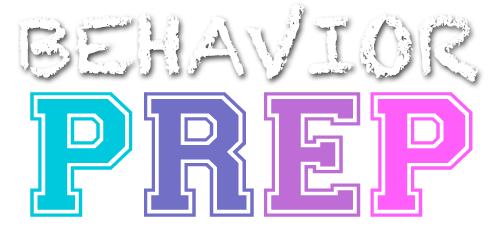G.11 Shape dimensions of Behavior
Shaping the dimensions of behavior involves gradually reinforcing successive approximations of a target behavior by focusing on specific aspects or dimensions of that behavior, such as frequency, duration, intensity, or topography (form). This process helps individuals improve or refine behaviors over time by reinforcing incremental changes toward the final desired behavior.
A BCBA may use shaping procedures to teach and reinforce desired behaviors in therapy. Shaping involves systematically reinforcing successive approximations of the target behavior until the final desired behavior is achieved. Here is a detailed procedure that a BCBA might follow when using shaping techniques, along with examples
- Define the Target Behavior: Identify the specific behavior that you want to shape. Clearly define the behavior so that the BCBA and the individual receiving therapy understand the goal.
- Example: Teaching a child with autism to say the word “ball.”
- Assess the Baseline: Observe and assess the individual’s current abilities and existing behaviors related to the target behavior. This baseline data helps determine the starting point for shaping.
- Example: Determine if the child has any vocalizations or sounds like the word “ball” in their repertoire.
- Identify the Initial Approximation: Identify a behavior that is a small step towards the target behavior and can be readily observed and reinforced. This initial approximation should be something that the individual can do or has some proficiency in.
- Example: If the child is vocalizing, the initial approximation could reinforce any sound resembling a “b” or “ah” sound.
- Define the Criteria for Reinforcement: Establish specific criteria for reinforcement to determine when the individual will receive reinforcement for their efforts. Gradually raise the criteria as the individual demonstrates the initial approximation consistently.
- Example: Initially, reinforce any vocalization resembling the “b” or “ah” sound. Then, raise the criteria to reinforce vocalizations that are closer in sound or timing to the word “ball.”
- Provide Reinforcement: Immediately provide reinforcement (e.g., praise, tokens, tangible rewards) whenever the individual engages in the initial approximation behavior that meets the reinforcement criteria. Reinforcement should be delivered consistently and contingently upon the occurrence of the behavior.
- Example: Whenever the child makes a vocalization resembling the “b” or “ah” sound, provide immediate verbal praise and a preferred reward, such as a small toy or access to a desired activity.
- Raise the Criteria: Gradually increase the criteria for reinforcement by requiring more precise or accurate responses that are closer to the final desired behavior. Shape the behavior in small steps, reinforcing each successive approximation.
- Example: Raise the criteria by only reinforcing vocalizations that are closer in sound or timing to the word “ball.” For instance, reinforce vocalizations that sound more like “bah” or occur immediately after presenting a picture of a ball.
- Continue Shaping: Continue shaping the behavior by systematically reinforcing each successive approximation that brings the individual closer to the final desired behavior. Reinforce behaviors that more closely resemble the target behavior.
- Example: Reinforce vocalizations that are increasingly like the word “ball” (e.g., “ba,” “bawl”) and occur in response to the verbal prompt “Say ‘ball’.”
- Finalize the Desired Behavior: Continue shaping the behavior until the individual successfully exhibits the final desired behavior. Gradually fade out the shaping procedures as the individual consistently performs the target behavior.
- Example: The shaping process is considered successful once the child produces a vocalization that closely matches the word “ball” without prompts or reinforcement.
A BCBA can guide individuals in acquiring new behaviors and reaching specific goals by using shaping procedures. It’s essential to provide clear criteria for reinforcement, gradually increase the requirements for reinforcement, and consistently reinforce successive approximations of the behavior. Shaping can be applied to a wide range of behaviors, from communication skills to motor skills, and allows for individualized instruction and progress
